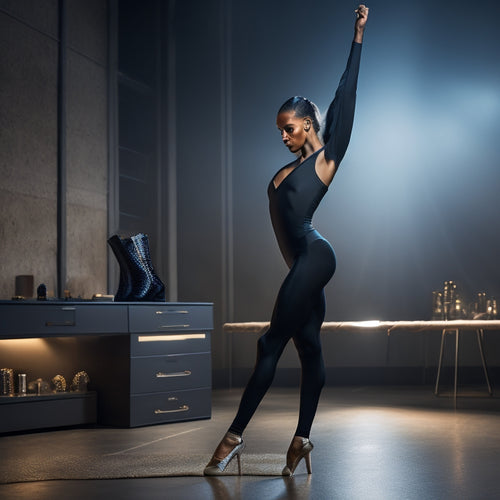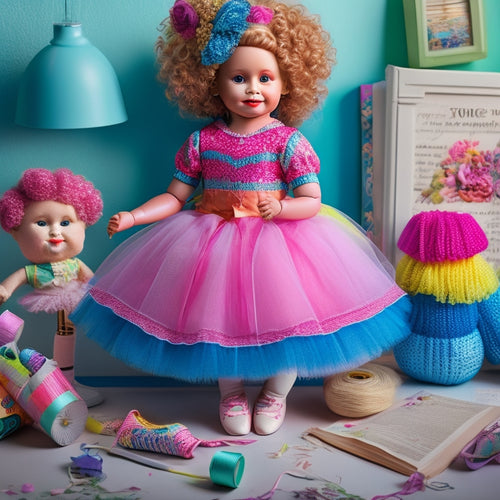
Dance Through Ages: A Vibrant Journey
Share
Dance has been an integral part of human culture for thousands of years, with ancient civilizations incorporating it into their religious rituals, social gatherings, and cultural traditions. From Egypt to Greece, India, and China, dance has played a significant role in shaping cultural identities. As we journey through time, we witness the evolution of dance styles, from the elegant movements of ballet to the energetic beats of jazz and hip-hop. The power of dance lies in its ability to transcend cultural boundaries, convey emotions, and inspire social change. As we continue to explore the vibrant journey of dance, the rhythms and melodies await.
Key Takeaways
• Ancient civilizations, including Egypt, Greece, India, and China, integrated dance into religious rituals, social gatherings, and cultural traditions.
• Dance evolved over time, with styles like ballet, jazz, hip-hop, and Latin dances emerging, each with unique cultural significance.
• Dance is a powerful medium of expression that transcends cultural boundaries, fostering community bonding, understanding, and conveying messages.
• Through dance, individuals can express their identities and beliefs, preserve traditional practices, and raise awareness for social causes.
• Dance has been used as a tool for social change, inspiring movements, championing causes, and breaking down barriers to promote inclusivity and diversity.
Ancient Roots of Dance
As we explore the ancient origins of dance, we find that this expressive art form has been an integral part of human culture for millennia. Ancient civilizations such as Egypt, Greece, India, and China left an indelible mark on the evolution of dance.
In ancient Egypt, dance was an essential component of religious rituals. Intricate movements and gestures were used to honor the gods.
In ancient Greece, dance played a crucial role in social gatherings, fostering community bonding and socialization. These ancient civilizations laid the foundation for the diverse range of dance styles that followed, each with its unique characteristics and cultural significance.
The rich cultural heritage of these ancient civilizations continues to inspire and influence dance forms to this day.
Dance Styles Through Time
Through the Renaissance courts of Italy, a new era of dance emerged, as ballet, with its elegant movements and aristocratic flair, began to take shape, influenced by the cultural and artistic rebirth of the time. This marked a significant milestone in the evolution of dance, as cultural influences from the Italian Renaissance merged with the existing dance forms.
The evolution of dance continued with the emergence of jazz in the early 20th century, followed by hip-hop in the Bronx, New York. Latin dances like salsa and samba drew inspiration from African rhythms, while contemporary dance blended elements of different styles. These dance styles, shaped by cultural influences, not only reflected the era but also contributed to the rich tapestry of dance history.
The Power of Dance
Dance, a powerful medium of expression, has been harnessed throughout history to evoke emotions, convey messages, and bring people together. This vibrant art form has the ability to transcend cultural boundaries, fostering a sense of community and understanding.
As a form of cultural expression, dance has been used to convey messages, tell stories, and preserve traditions.
- Dance has been used as a healing movement, providing therapy and rehabilitation for individuals with physical and mental disabilities.
- It has played a significant role in social activism, serving as a form of protest and expression of identity.
- Dance has been used to promote cultural understanding, celebrating diversity and promoting unity.
- As a form of cultural expression, dance has been used to preserve traditional practices and pass down cultural heritage.
- Through its power to evoke emotions, dance has been used to raise awareness and support for social causes.
Frequently Asked Questions
How Do I Get Started With Learning a New Dance Style?
To start learning a new dance style, establish a consistent practice schedule, set achievable dance goals, and select music that inspires movement. Find a conducive learning environment, cultivate body awareness, and respect class etiquette, while seeking a qualified teacher and suitable studio options.
What Are the Health Benefits of Regular Dance Practice?
Regular dance practice yields numerous health benefits, including improved flexibility through increased range of motion and reduced stiffness, as well as enhanced cardiovascular strength, boosting overall physical fitness and reducing the risk of chronic diseases.
Can Anyone Learn to Dance, Regardless of Age or Ability?
Regardless of age or ability, anyone can learn to dance with a mindset shift that prioritizes adaptability and creativity, as physical limitations can be overcome with modifications and accommodations, fostering inclusive and empowering dance experiences.
How Do I Choose the Right Dance Style for My Personality?
To choose the right dance style for your personality, consider your body language and personal expression. Reflect on your natural movements, posture, and energy levels to identify a style that complements your unique physicality and artistic expression.
What Are Some Tips for Overcoming Stage Fright as a Dancer?
To overcome stage fright, dancers can employ pre-show rituals, such as visualization exercises, deep breathing, and physical warm-ups, to cultivate mental preparation, boost confidence, and channel nervous energy into an engaging performance.
Related Posts
-

Market and Sell Digital Products as a Dance Artist
You're a dance artist with a wealth of knowledge and creativity, and now you want to turn that into digital products ...
-

5 Dance Performance Apparel Must-Haves for a Flawless Routine
You rely on your dancewear to deliver a flawless performance, and that's exactly what it should do. Your dance perfor...
-

Exciting 'Dancer Doll' Sewing Pattern Released
The Dancer Doll sewing pattern is now available, offering a detailed guide to crafting a beautifully detailed doll. T...


